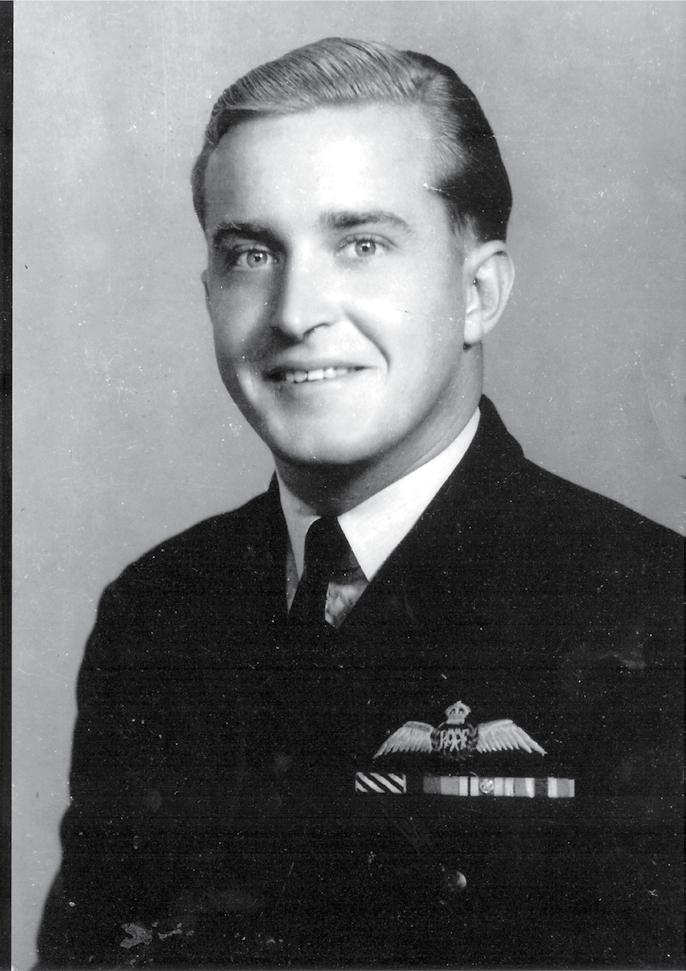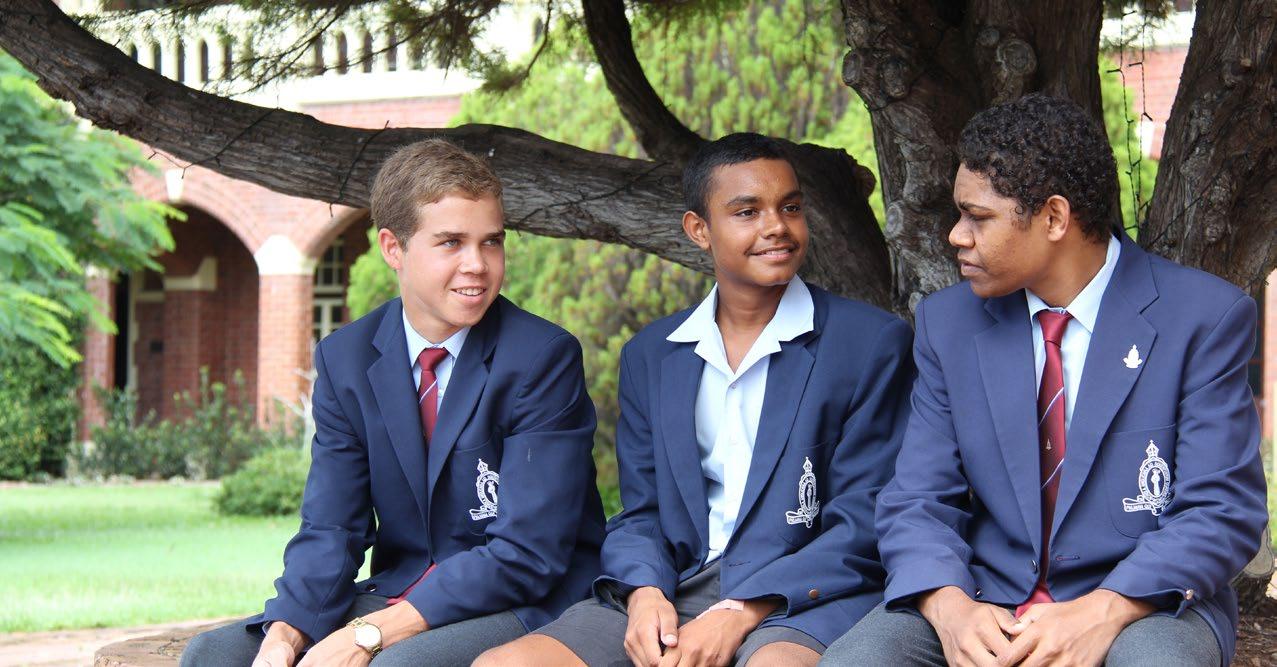
8 minute read
Vale Adam Radcliffe DFC
Alan Radcliffe VALE
DFC
Advertisement


1921 – 2019

Mrs Debbie Turner
TSS Archives
Our School flag was at half-mast at the end of Term in respect for Alan Radcliffe who sadly passed away on 7 June. As our oldest Old Boy and indeed one of our oldest teachers, Alan Radcliffe’s life was deeply etched into TSS history.
Alan’s long involvement with TSS represented a record few can equal. It is also an involvement with Queensland’s history transitioning from our earliest pioneering days to today’s modern society.
Where to begin? The son of the School’s fourth Headmaster, John Norman Radcliffe, MC (1941-50), the Radcliffe family stamp has been left on TSS in so many different ways. Fittingly, one of them is Radcliffe House, a day House founded in 1975 in his honour just two years before his retirement. One could say this was quite an achievement for a young man who never completed his Junior and Senior examinations, and who said he was “hopeless at ball games”, but some very special talents were to reveal themselves all in good time. Born in Brisbane in 1921, one of three children to John, a Rhodes Scholar, and Evelyn (nee Raymond whose father A J Raymond was a long-standing member of Brisbane City Council and Brisbane mayor in 1912), Alan moved to Southport with his parents the following year where they settled in Radford Street near TSS.
It was here as a child that he used to watch hawks swoop down onto the waters of the Nerang River then catch the wind thermals as they rose high into the sky again. This developed his long lasting love affair with the water and sky. Both (the flying and water) were later to play a big part in Alan’s life and set in motion his dream to fly, sail and fish.
“As a child I made model aeroplanes and sailed on the Nerang River in a 9” canoe we had stored in a boatshed in Radford Street,” said Alan. One has to remember the land demographic of the Nerang River was very different in those days compared to today with Pong Creek playing a pivotal role in leisure activities of TSS’ earliest students.
Education was not high on Alan’s agenda in those days, although he was encouraged to attend TSS as one of only a handful of boarders in 1927. His sister, Denise, who was 10 years his junior, attended St Hilda’s School. After a year at TSS, Alan attended Southport State School until he was 13-years-old and returned to TSS to complete his scholarship examination under the Headmastership of Cecil Pearce.
Alan’s father was a strong advocate for education (holding a Diploma of Education of Oxford through a Rhodes Scholarship in 1914 and an MA from Queensland University; his grandfather being the Chief Inspector of Schools in Queensland) and was a Senior Master at TSS from 1923 before his appointment as Headmaster. It was in 1914 when Alan’s father interrupted his Oxford studies to join the Royal Artillery in France and rose to the rank of Captain, winning the Military Cross. John Radcliffe was to return to Oxford in 1937 at the invitation of the Rhodes Trust. He was also a keen golfer and tennis player scooping up many championships (State and Open Australian) in both sports.
Alan’s love of the water was reflected in his becoming the swimming champion in both the Junior and Senior schools and playing breakaway on the wing in 1938 when TSS won the premiership. The year before, Alan had attended St Edwards School in Oxford while his father was at Oxford University.
Despite somehow skipping both his Junior and Senior examinations, this was not detrimental to Alan’s career. After leaving TSS, he said he spent 18 months ‘marking time’ with the Queensland National Bank before seizing the opportunity to join the RAF in 1941 and follow his dream of flying. He spent three months ground training in Sydney then another three months flying Tiger Moths.
Alan was posted to Ontario, Canada with the RAF where he trained flying the dual-seat Harvard and Yale low wing trainers (he came 3rd out of 60 in his course). Now there was no stopping Alan.
He sailed to England and was soon flying Hurricane fighters from Usworth Airfield, near Newcastle. It was a steep learning curve for Alan as these fighters only had one seat so you were given the keys and then you were on your own. Alan joined the specialist 6 Squadron RAF, whose Harriers were involved in the Falklands Conflict.
Alan’s piloting skills during the war took him to many destinations, including flying the Tankbuster Hurricane 2D in North Africa’s Western Desert regions where he pitted his skills against German tanks. To ensure bombing shells were armour piercing, the Hurricanes operated and fired their twin cannons at an altitude of six metres. The squadron motto was, we fly lower than you land, and the squadron always advanced across Africa, never retreating in the time Radcliffe served with it.
Alan was part of a sortie that saved General Le Clerc from a group of Panzer tanks after which several French Croix de Guerre were awarded to the squadron. He never trusted the parachute, preferring a wheels-up or dead-stick landing.
Luck was on his side too, at one point a bullet passed from under his Hurricane through the radiator and fuel tank, creating a fountain of hot glycol and fuel. It then went between his knees and then through the fuselage without hitting him. Alan crash landed the Hurricane relatively safely with no landing gear.
Despite his age, Alan had a remarkable memory (thanks, he said, to playing Scrabble and Sudoku on his new iPad). He vividly recalled hearing the guns in the distance (70 miles away) during the battle of El Alamein in which two other Old Boys were involved (the late Bill Heatley Snr carried out a wounded Dick Newton on his shoulders on that occasion).
After the allies gained control of North Africa, Alan transitioned to Spitfires and served in Malta, Sicily and Italy. He was elevated to Flight Commander of the famous 601 ‘City of London’ squadron before serving as a flight instructor between tours of duty.
His final posting was Squadron Leader of 241 Spitfire Squadron in southern Italy at the ripe old age of 23 years, flying mostly against ground targets with the odd tree-top caught in the prop to contend with. He also convinced an American Catalina Flying Boat pilot to land in rough water in the Mediterranean to pick up a 241 squadron pilot.
During this time despite the focus on ground targets, Alan recorded one enemy fighter shot down; one probable, and one damaged enemy aircraft and was awarded the Distinguished Flying Cross Medal. After being part of the effort that pushed the Axis forces out of Italy; anti-climactically, Alan waited several months at the Suez Canal for a boat to take him home and was finally discharged at Sandgate, Queensland.
On his return home to Southport, Alan remembers his father asking him: “What are you going to do now for a crust?” After much thought, Alan opted to start teaching, firstly Grade 3 in the junior school at TSS. It was to be the beginning of his teaching career at TSS during which time he gained a BA externally from the University of Queensland and went on to teach geography in the Senior School until his retirement in 1977. Alan spent most of his days post WWII living at Burleigh Heads, Banora Point and Southport where he built his own two-storey house from an empty shell of four walls in Winchester Street, next door to where the late Harry Kaiser lived and just a few steps from his family home in Radford Street. The house still stands today.
It was here that he and wife Elise (known to all as Mickey) raised their family – son Bill who attended TSS, daughters Barbara and Elizabeth, a radiographer who sadly died after contracting a tropical disease. The couple were married for a remarkable 68 years. Alan's later years were in a retirement home where he made many friends.
While Alan admitted he had outlived his contemporaries, he said it was the students he best remembered from those days and could rattle their names off from the top of his head, who they were, where they came from and his enjoyment of teaching them geography. In Bearing the Palm (the School’s official history), one student, John Winn, says: “Alan Radcliffe taught me geography… he treated me as though I were his own son”.
During his teaching tenure at TSS, Alan spent 33 years in the Cadet Corps as a Major (due to his rank and leadership of 241 Squadron in WWII). He would never get the love of sailing out of his system, looking after the School’s speed boats, and seizing every opportunity to sail the Whitsundays and other waters with such friends as Tom Atkinson. He also was a keen water skier.
His phenomenal memory recounted all the boats he had sailed in starting from the small family canoe, to 12” tinnies, his grandfather’s 14 footer, a 28” family cruiser, sabots for his children and even ocean racing with TSS associates.
TSS is indeed all the richer for having students and staff like Alan Radcliffe, who was a ‘regular’ at school functions and a proud sixth generation Queenslander. Last year he was the oldest Old Boy at the annual Older Old Boys’ Assembly – a true honour for such an honourable gentleman.
His two favourite sayings were; “It’s not so much the intelligence (that counts) but the motivation… you can’t measure motivation” and “The best way to land a ‘Spitty’ is with the wheels up” We will miss you Alan.










